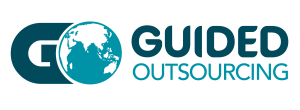
One of the most common objections to outsourcing is the fear that outsourced professionals may not meet the required quality standards. Business owners worry about inconsistent deliverables, communication barriers, and a lack of industry expertise. However, outsourcing—when done strategically—can provide exceptional quality, often surpassing in-house capabilities.
Understanding the Quality Control Mechanisms in Outsourcing
Outsourcing firms employ various mechanisms to ensure they meet or exceed client expectations. These include stringent hiring processes, comprehensive training programs, and multi-layered quality assurance measures. Outsourcing providers deliver work that aligns with industry standards and business objectives by integrating these elements.
Rigorous Hiring and Screening Processes
A strong workforce starts with a meticulous hiring process. Leading outsourcing providers implement a multi-step screening process to ensure they onboard only top-tier professionals. These processes typically include:
- Skill Assessments & Certifications – Candidates undergo rigorous testing to verify their technical skills, industry knowledge, and problem-solving abilities. Certifications ensure professionals meet industry standards.
- Industry Experience Verification – Outsourcing firms prioritize professionals with proven experience in the client’s industry, ensuring they understand the nuances of the field.
- Cultural Fit Evaluation – Aligning outsourced professionals with a client’s company culture fosters smooth collaboration and enhances work quality.
Comprehensive Training and Onboarding
To maintain quality, outsourcing companies invest in training programs that align with client-specific requirements and industry best practices.
- Client-Specific Training – Custom training programs ensure that outsourced teams understand client goals, brand identity, and preferred workflows.
- Industry Compliance Training – Many industries, such as healthcare and finance, require compliance with strict regulations. Outsourcing firms provide specialized training to meet these standards.
- Ongoing Skills Development – Continuous learning opportunities, including workshops and certifications, keep outsourced professionals updated on evolving industry trends.
Strict Quality Assurance (QA) Protocols
Leading outsourcing companies implement multiple layers of quality assurance to guarantee consistent, high-quality output.
- Multi-Tier Review Systems – Work undergoes several levels of review before reaching the client, minimizing errors and ensuring compliance with standards.
- Performance Metrics & KPIs Outsourcing firms track key performance indicators (KPIs) such as accuracy, turnaround time, and client satisfaction.
- Client Feedback Loops – Regular performance evaluations and feedback mechanisms allow continuous improvement and adaptation to client expectations.
How to Ensure Your Outsourced Team Meets Your Standards
While outsourcing providers implement strong quality controls, businesses can take proactive steps to ensure the partnership yields top-tier results. Selecting the right provider, setting clear expectations, and leveraging technology can enhance the effectiveness of outsourced teams.
Choose the Right Outsourcing Partner
Not all outsourcing providers are created equal. Finding the right outsourcing provider is crucial for maintaining high-quality work. Businesses should conduct thorough research before partnering with a provider.
- Proven Track Record – Reviewing case studies, testimonials, and industry recognition helps gauge a provider’s credibility and experience.
- Transparent Communication – Open and proactive communication ensures smooth collaboration and quick issue resolution.
- Strong References – Speaking with existing clients can provide insights into the outsourcing provider’s reliability and quality standards.
Set Clear Expectations & Quality Guidelines
Ambiguity can lead to subpar results, so defining expectations and establishing measurable benchmarks is essential.
- Project Scope & Objectives – Clearly outline deliverables, objectives, and success criteria to align expectations from the start.
- Quality Standards & Benchmarks – Providing detailed guidelines, reference materials, and past examples helps maintain consistency.
- Turnaround Times & Deadlines – Establishing realistic timelines with buffer periods prevents rushed work and ensures quality is upheld.
Leverage Technology for Better Collaboration
Technology plays a vital role in streamlining workflows and enhancing collaboration between in-house teams and outsourced professionals. Using project management and communication tools enhances outsourcing efficiency:
- Project Management Tools – Platforms like Trello, Asana, and ClickUp help track tasks, deadlines, and project progress in real time.
- Communication Platforms – Tools such as Slack, Microsoft Teams, and Zoom facilitate instant communication and reduce misunderstandings.
- File-Sharing & Documentation – Utilizing cloud storage solutions like Google Drive and SharePoint ensures all team members have access to updated documents.
Examples of High-Quality Outsourcing Success
Businesses across various industries have successfully leveraged outsourcing to maintain high-quality standards while scaling operations. Below are some examples of outsourcing done right.
Tech Companies Scaling with Remote Developers
Leading technology companies, including Slack and GitHub, have relied on remote developers to expand their software engineering capabilities. By partnering with skilled offshore teams, they ensure high-quality code development while reducing operational costs.
Accounting Firms Leveraging Virtual Teams
Many CPA firms outsource bookkeeping and payroll functions to specialized firms, ensuring accurate and compliant financial reporting. Outsourced accounting professionals are trained in regulatory requirements, minimizing errors and improving efficiency.
Marketing Agencies Boosting Content Production
Global marketing agencies outsource content creation to experienced writers and designers. This approach allows them to produce high-quality blogs, social media content, and graphic designs without overstretching their in-house teams.
Debunking Myths About Outsourcing Quality
Despite the success of outsourcing, myths about quality concerns persist. Let’s debunk some of the most common misconceptions.
Myth #1: Outsourced Professionals Lack Industry Knowledge
Reality: Reputable outsourcing providers employ experts with specialized knowledge and experience in various industries, ensuring high-quality outcomes.
Myth #2: Communication Barriers Lead to Poor Work Quality
Reality: Clear guidelines, structured workflows, and collaboration tools help mitigate communication challenges and enhance project execution.
Myth #3: Outsourcing Equals Lower Quality
Reality: With strict hiring processes, training programs, and quality control mechanisms, outsourcing often enhances work quality rather than compromising it.

Conclusion
High-Quality Outsourcing is Achievable. When managed correctly, outsourcing ensures high-quality results that meet or exceed internal standards. By partnering with the right provider, setting clear expectations, and leveraging quality control measures, businesses can confidently outsource tasks without compromising quality.
If you’re considering outsourcing but have concerns about quality, start by researching reputable providers with proven success in your industry. With the right approach, outsourcing can be a game-changer for your business growth.
Take the Next Step
Ready to explore outsourcing without sacrificing quality? Contact Guided Outsourcing to learn how our expert teams deliver top-tier results tailored to your business needs.

